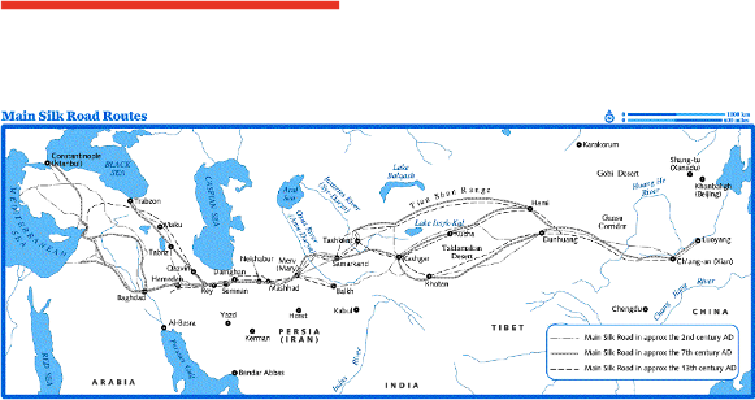Travel Reference
In-Depth Information
work and elaborate Kufic inscriptions of Seljuk
mosques and minarets can still be seen, partic-
ularly in Esfahan's Masjed-e Jameh (Jameh
Mosque).
The death of Malek Shah in 1092 marked
the end of real Seljuk supremacy, and once
again a powerful empire splintered into fragments.
men living today can likely trace their heritage back
to the loins of the great ruler.
Genghis Khan & Tamerlane
In the early 13th century, the Seljuk Empire came to a final and bloody end when the ram-
paging Mongols swept across the Iranian plateau on their horses, leaving a trail of cold-
blooded devastation and thousands of dismembered heads in their wake.
Under the leadership first of Genghis Khan, and then his grandsons, including Hulagu,
the Mongol rulers managed to seize all of Persia, as well as an empire stretching from
Beijing (China) to İstanbul (Turkey). Eventually they established a capital at Tabriz (too
close, as they later found out, to the Turks). It was Hulagu Khan who put an end to the
stealthy power of the Assassins, destroying their castles around Alamut. After a flirtation
with Christianity and Buddhism, Hulagu was forced to adopt Islam by social pressures in
Persia. He called himself
il khan
(provincial khan or ruler, deputy to the great khan in
Mongolia), a name later given to the entire Ilkhanid dynasty (1256-1335).
The Mongols destroyed many of the Persian cities they conquered, obliterating much of
Persia's documented history. But they also became great arts patrons, leaving many fine
monuments, including the wonderful Oljeitu Mausoleum at Soltaniyeh. During Mongol
rule Farsi definitively replaced Arabic as the lingua franca.


